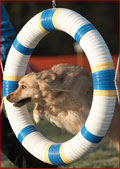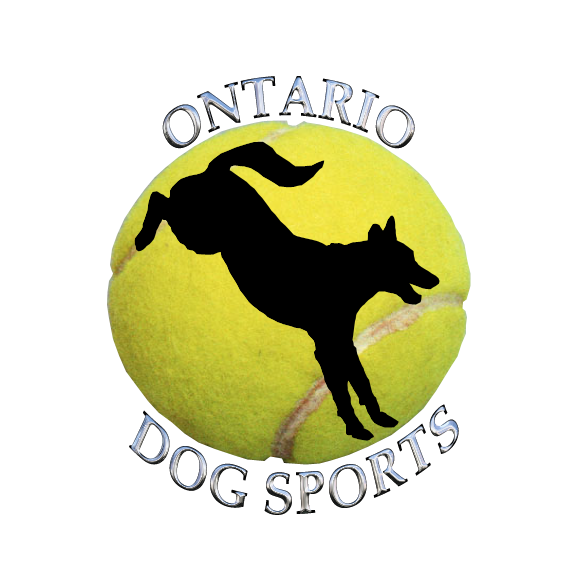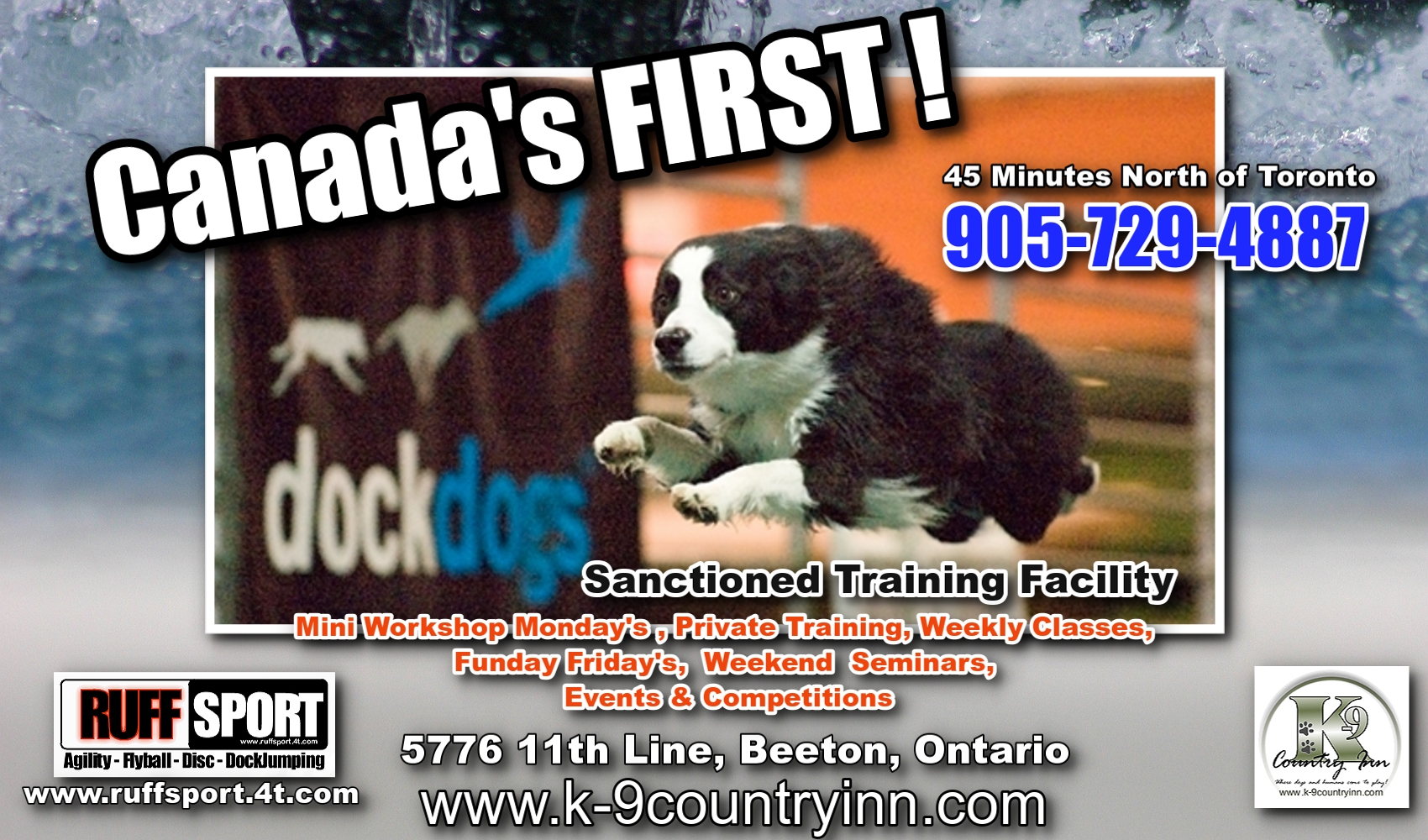Serpentine Tracks: A New Method of Introducing Dogs to Tracking
From: Cross Country Taracking Club
All the existing literature on tracking introduces tracking by beginning with straight line tracks with a
reward and/or article at the end. Some methods use food on the track, some don't; some double or
triple lay the tracks, and so on, but getting the dog used to straight lines before introducing turns is
fundamental to all these methods.
Once the dog masters tracking in a straight line, turns are introduced. This has often been one of the
first big problem areas for the dogs and handlers in tracking. The dog gets to the end of the straight
leg, keeps on going, loses the scent, gets confused, wanders around, and hopefully eventually figures
out that the track goes in another direction. The handler also has to figure out what to do -- do you
stop, restrain the dog, let him wander (and how far do you let him get off the track?), or show him the
new leg? All the while you are getting the lead tangled, being confused yourself, and further confusing
the dog. Often the dog will get distracted and decide to do something else, and then you have to
correct him for that. A typical pattern for the dog's movement when introducing turns is shown in
Figure 1, below.
![]() This article presents a different approach to introducing dogs (and handlers) to tracking, one which
This article presents a different approach to introducing dogs (and handlers) to tracking, one which
will reduce the stress and confusion caused by learning straight legs and then being confused by
turns. I learned about the method from the internet Tracking-L forum, from Dori Painter, who teaches
her dogs for Schutzhund (abbreviation, SchH) tracking, and I received permission to use it. In SchH,
it is essential that the dog "footstep" track, that is, keep very close to the track and not air scent or
fringe track. Therefore, SchH trackers use food on the track from the beginning to keep the dog's
nose close to the ground. This use of food, along with the use of a track laid in an arc instead of a
straight line, encourages the dog to use its nose and not its eyes to find the track (and the food).
(Note: If you don't like to train with food, for whatever reasons, it is still possible to use serpentines.
See the note at the end of this article.) Often when tracking is introduced using straight lines, food,
and double or triple laid tracks, the scent is so strong and the direction so predictable that the dog
learns right away that it can air scent, fringe track, or move in a straight line to find the glove, rather
than stay close to the actual track. When the dog learns these bad habits from the beginning, it
becomes harder to "read" them when you begin blind tracks.
Figure 2: The first curved track.
The first tracks. Start with a simple, single arc, about 40-50 short footsteps in length. Place food on
the track at first very frequently--every two or three steps, depending on the size of the dog--so the
dog is on a treasure hunt where following the track is its own reward. The glove at the end is introduced
to the dog in the same manner as in other methods. The track should be laid with the wind at
your back if possible, so as not to provide the dog with an overwhelming amount of scent. Step heel
to toe at first, and place the food in your footsteps throwing it carefully in front on you, then stepping
on it. The track should be walked only once, not double or triple laid (this is important, since it
would be very difficult to re-walk a track that is not in a straight line). You should put at least five
flags along the arc so that you know exactly where you walked. The track will look similar to the one
shown in Figure 2.

The track should be fairly "hot" (i.e. run very soon after you lay it) at first, about 10-15 minutes old.
Keep the dog on a six foot lead. Don't point to the track if you can help it. Encourage the dog
quietly, with "good track" or "good dog" as they progress. If the dog wanders off the track, don't say
anything and don't follow: stand still facing in the direction of the track, and when the dog gets back
on the track, praise and follow. Don't worry if they miss some of the food -- just ignore it. When
they get to the end, have food on the glove, and play with it so that the dog learns that the glove is a
wonderful reward.
When the dog successfully completes this first track, you should continue to lay tracks for him/her
quite often (two or three times a week) during the first couple of weeks until he/she gets the idea
about what tracking is. The tracks should be short, and not aged very long. Let the dog tell you how
quickly to progress: if the dog starts skipping over some of the drops, it is okay to space the food out
a little further. If the dog is running to the end of the track to play with the glove, make the track a
little longer, or age it a little longer (but don't add age and length at the same time). Once the dog
can successfully complete a single arc of about 75-100 yards with very little food on the track, you
might try removing the food from the track (leave it on or in the glove at the end), or try rubbing some
food on the soles of your boots, instead (this also works with the chow hounds who spend five
minutes at each drop to be sure they get every bit of food). Another good method is to use a drag.
Place steak, liver, or any other desirable food in the foot of one leg of a pair of panty hose (or use a
thin sock on a leash!), add a stone for weight, and drag it close behind you).
Introducing serpentines. If all this has been completed successfully (this might take anywhere
from two weeks to two months, depending on the dog and how often you track), then you can begin
to introduce multiple arcs (serpentines).
Two curves will not, by the way, look like a giant letter "M;"rather it will look like an "S" (if it looked like an "m" there would probably be an acute turn in thecenter, which would be too difficult at this stage of training). The dog may have some confusion initially when you introduce a change in direction. To help with this, you may want to put more food on the track at that point. The track should look similar to Figure 3.

Use the same methods, and continue to track at least two times a week if possible. Increase age and
length as the dog gains confidence (but not both at the same time). Do not hesitate to use a shorter,
hotter track, or to use more food on the track if the dog is having problems. As they progress, begin
to make the curves tighter and the spaces between them straighter. The tracks will begin to look like
Figure 4.

Figure 4 illustrates walking in a straight line, planting a flag, then making a tight arc of about 5-8
close footsteps.
You may also wish to stamp or drag your feet to lay down more scent. Be careful,
however, not to make the arc to sharp: the angle between the leg you are on and the next leg should
be 45 degrees or less when you first start this work. If the dog has no problem, you can gradually
make the angles sharper until they are 90 degrees, but don't be in a hurry to go to right angle turns.
Once the dog is making 45 degree arced turns with no problem, go to a 45 degree "normal" corner,
and if the dog has no problem go on from there, but do not hesitate to help the dog if he or she starts
going past a significant number of turns. Eventually the arcs will be eliminated entirely and the tracks
will look like Figure 5.
You may want to occasionally and/or randomly place food, a toy, or an article after the turns to give
the dog an immediate reward when he/she makes the right decision. Make sure the treat, article or
toy is at least 15 paces or more past the turn so they are not drawn around the corner by it. The
object is to get the dog to work out the turn and commit to it before they get the reward. Continue
on with tracking using the "traditional" methods from this point on, occasionally utilizing some
meandering legs or arcs interspersed with "normal" turns to be sure the dog isn't getting patterned into
always doing straight legs and angled turns.
This method works incredibly well. You will find that you have a confident, happy tracking dog
(and, thus, a more confident and happy handler) because the dog will make correct decisions from
the beginning, rather than learning with straight-line tracks, introducing turns and making the dog be
"wrong", and then relearning that tracks are not always straight. They also learn from the beginning
that they must use their noses and pay attention because the track could go anywhere, thus discouraging
air-scenting and fringe tracking.
Good luck!
Post-script about using food in training. Some people have commented that they like this
method, but they can't or don't want to use food in training. If you live in the south and have to deal
with fire ants, this is certainly understandable. I use food with beginning dogs because it is a quick
and painless way to get them to understand what it is you want them to do. The idea is not to be
dependent on it, but to eliminate it as quickly as you can while still maintaining motivation. I lessen
the amount of food I use immediately after the first few tracks, but I still use it (sparingly) when I think
it might help the dog. I still give food to my VST dog (randomly and from my pocket, not the ground)
when she finds an article. She loves it and I see no reason not to do it. If your dog is not motivated
by food, or if there are other reasons you don't want to use it, the method will still work, but may
require a little more creativity on your part. Placing food on the ground, stepping on it, and then
picking it up might work. A drag might work. Or shorter tracks to start with and a glove that has your
dog's favorite toy in it might work.
I had a tracker come to me for help because his dog was completely uninterested in food and didn't
seem motivated to track. I asked him what did motivate the dog and he told me he was crazy for
tennis balls, so much so that he had to take them away from the dog because he was wearing away
the enamel on his teeth. So I suggested that the only time the dog would ever get to play with a
tennis ball in the future should be when he found it in his glove at the end of the track. This was the
key for this dog, and he went on to get his TD in short order. So food is not necessary for this (or
really any) training method, but it can help. It can also be overused: it's up to you to be observant
and creative about what motivates your dog.
P.S. I would love to hear from anyone who uses this method to help evaluate its effectiveness or
refine the technique. You can reach me via e-mail at TDXWestie@compuserve.com. Thanks!
Allison Platt

 dog obedience,
dog obedience,  dog training,
dog training,  tracking training in
tracking training in  Tracking
Tracking 





Reader Comments